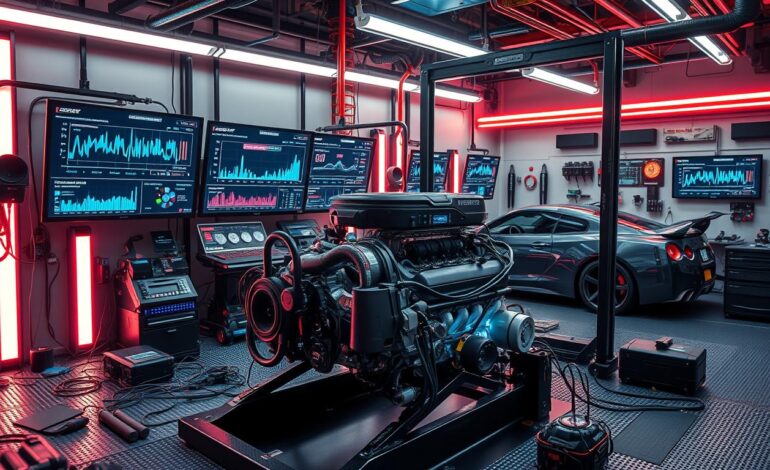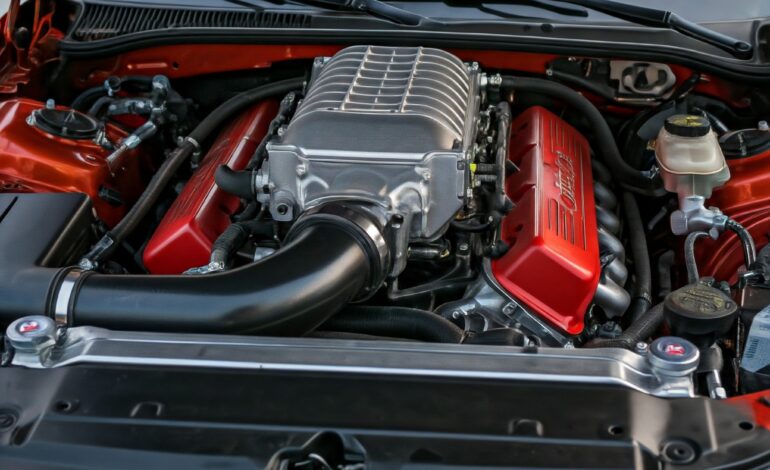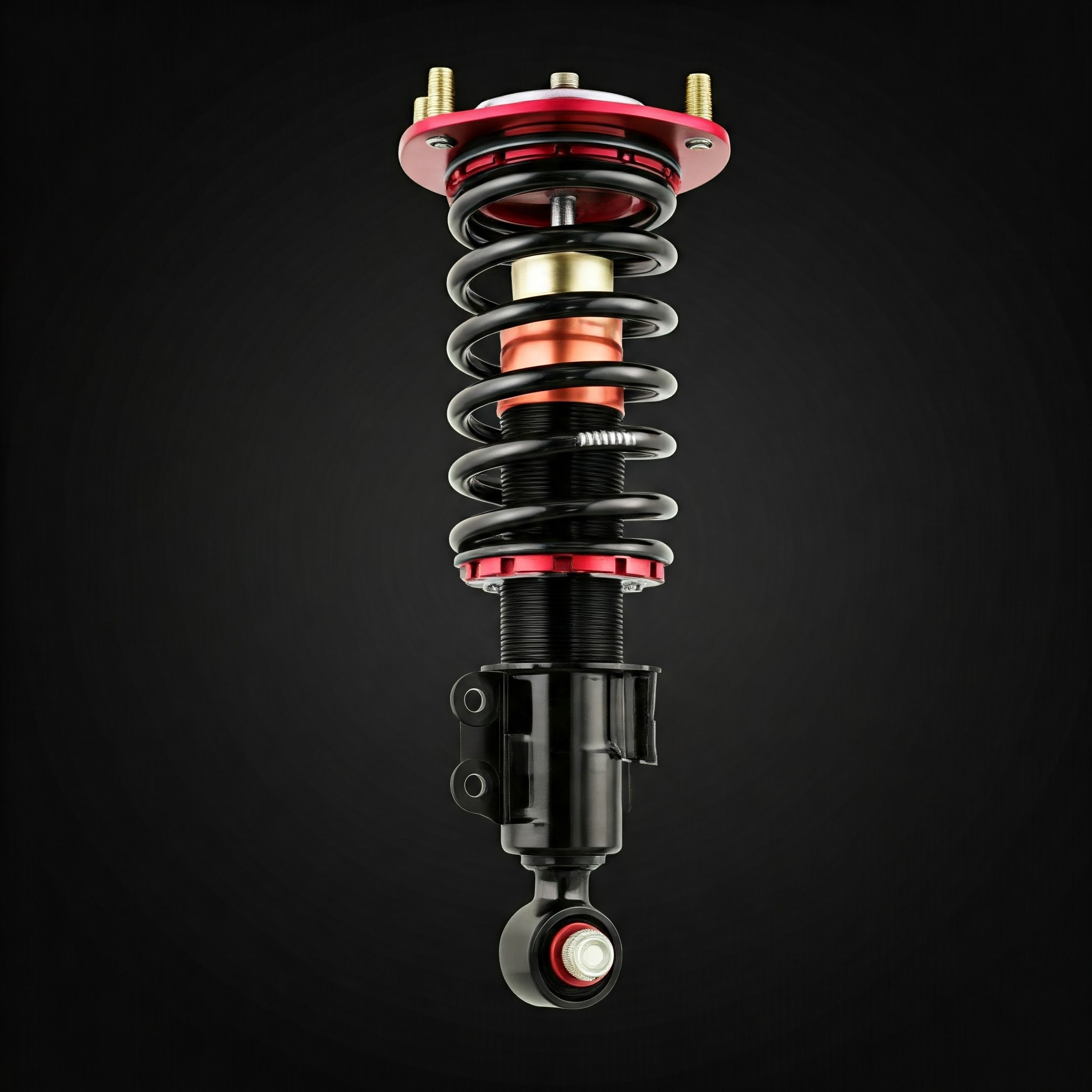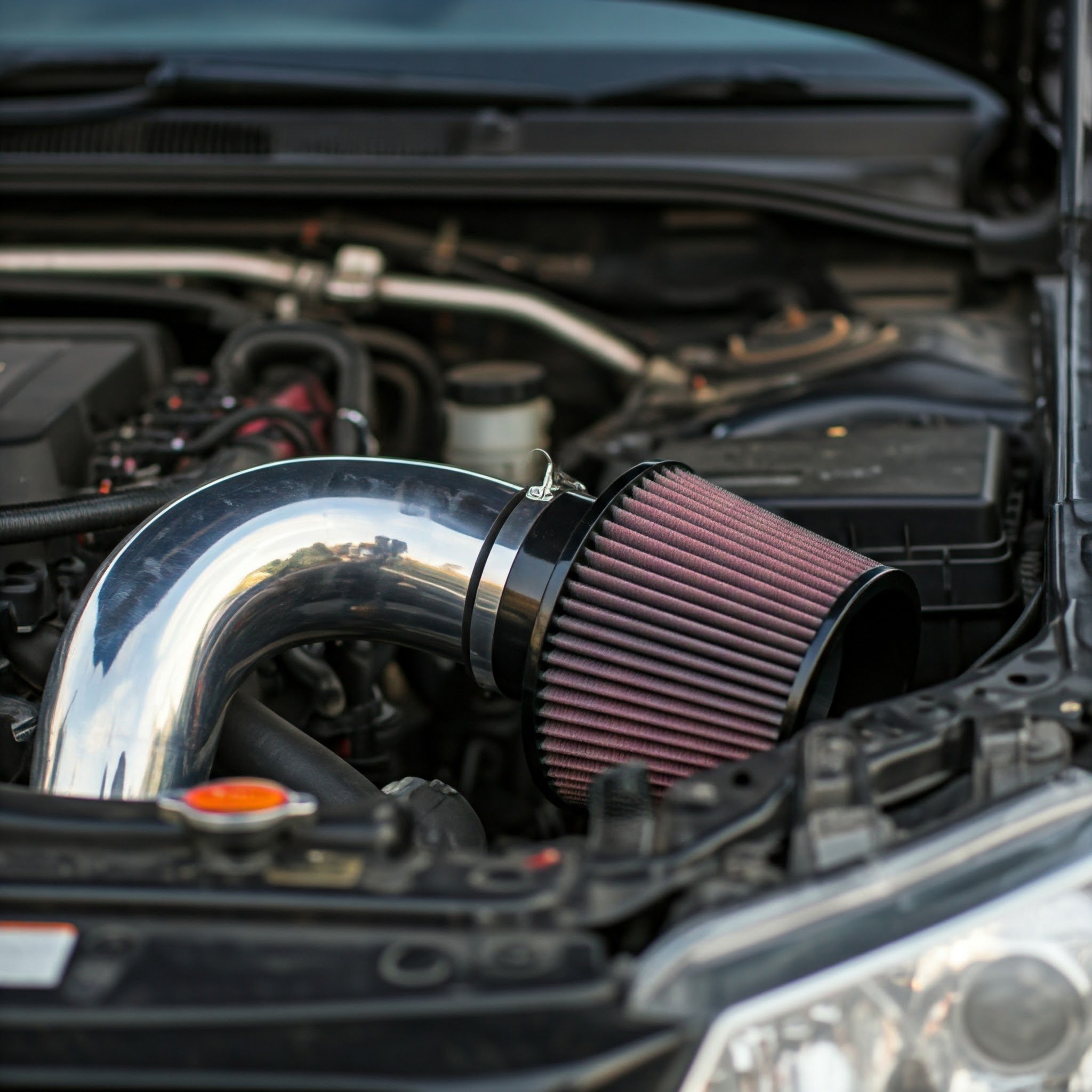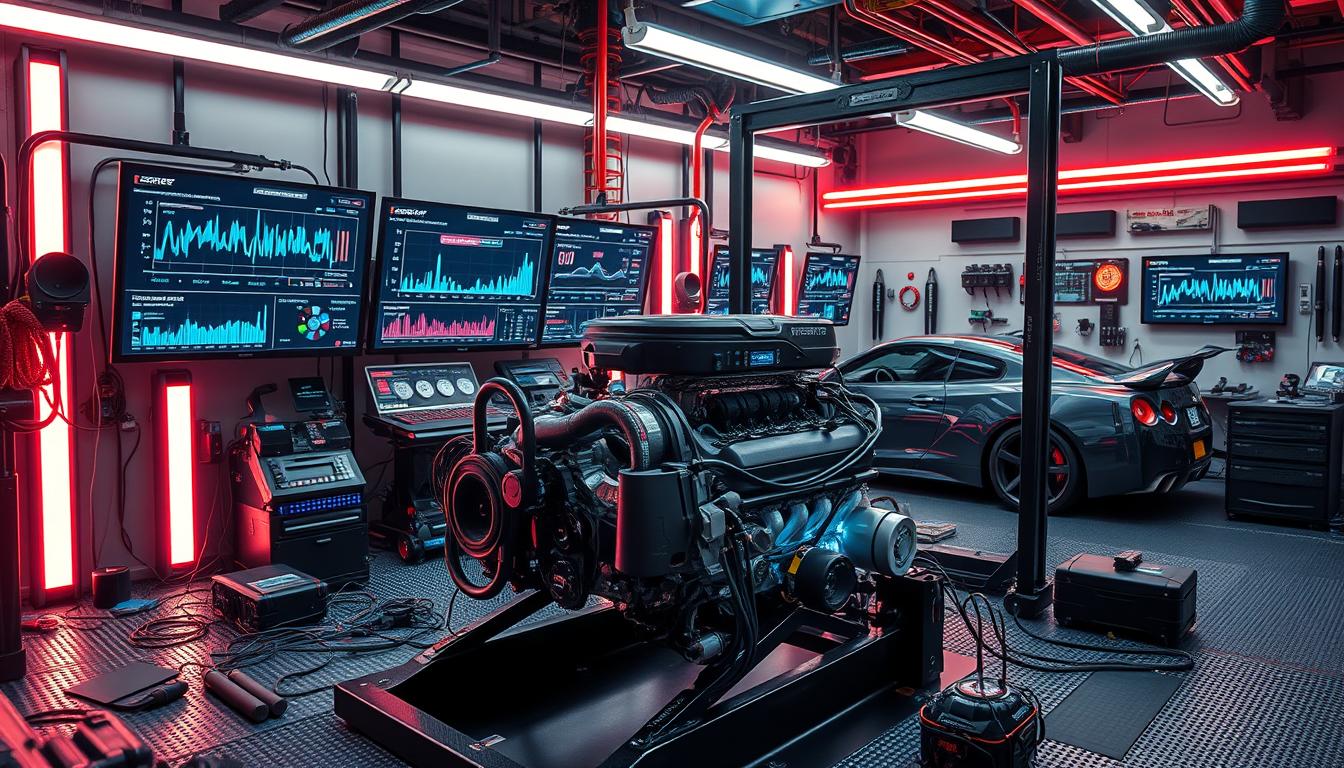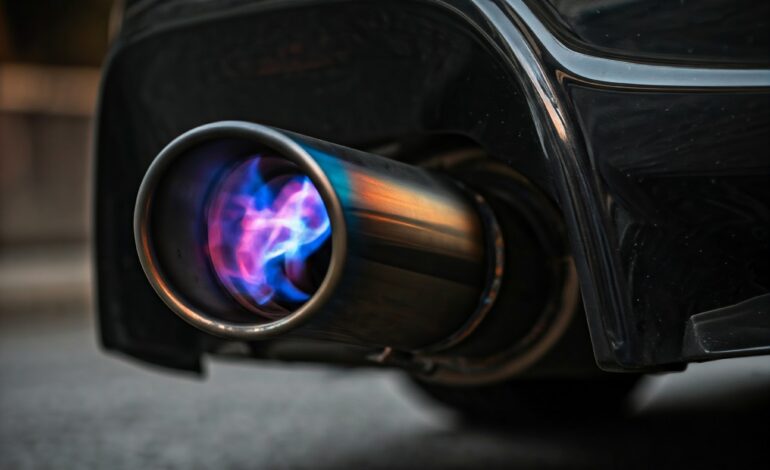
How to Upgrade Your Exhaust for Maximum Performance
Welcome to our guide on upgrading your exhaust system. This upgrade can make your vehicle more powerful and efficient. We’ll cover the basics of exhaust systems and show you how to upgrade for better performance.
A performance exhaust boosts your vehicle’s power and torque. It does this by improving exhaust gas flow. This is thanks to high-quality materials and designs that cut backpressure. It lets your engine run better. If you love cars or just want to boost your vehicle’s performance, a performance exhaust is a smart choice.
We aim to give you a detailed guide on exhaust system upgrades. We’ll talk about the benefits, tools, and how to pick the right exhaust for your vehicle. By the end, you’ll know how to upgrade your exhaust for top performance.
Key Takeaways
- Upgrading your exhaust system can significantly improve your vehicle’s performance
- A performance exhaust is designed to increase power and torque
- High-quality materials and designs are essential for a performance exhaust
- Reducing backpressure is key to improving exhaust flow
- A complete guide is necessary for a successful exhaust upgrade
- Choosing the right performance exhaust for your vehicle is critical
Understanding Exhaust System Basics
An exhaust system is key for a vehicle, removing harmful gases from the engine. Upgrading it can boost performance. It includes parts like the exhaust manifold, catalytic converter, muffler, and tailpipe.
A good exhaust system can make a vehicle run better. But, stock exhausts are made to follow emissions and noise rules. Knowing about exhaust systems helps car owners choose better upgrades.
Components of an Exhaust System
- Exhaust manifold: collects gases from the engine cylinders
- Catalytic converter: reduces harmful emissions
- Muffler: reduces noise
- Tailpipe: directs gases away from the vehicle
The Science Behind Exhaust Flow
The science of exhaust flow is complex but important. A high-performance exhaust system can make the engine more efficient. It can also increase horsepower and improve driving.
Benefits of a Performance Exhaust Upgrade
Upgrading your exhaust can boost your car’s power and efficiency. A high-quality exhaust system lets your engine work better. It reduces backpressure and improves airflow, helping your engine produce more power.
Some key benefits include:
- Increased horsepower and torque
- Improved fuel efficiency
- Enhanced sound and appearance
- Reduced emissions
Choosing the right exhaust system is important. Look for durable materials and smart design. For example, stainless steel systems are strong and resistant to rust.
A performance exhaust upgrade also makes your car look better. A sleek exhaust can give your car a bold look. It’s a great way to boost your car’s performance and style.
Types of Performance Exhaust Systems
Upgrading your vehicle’s exhaust system can boost its power and sound. You have a few options to choose from. Cat-back and header-back systems are two popular car mods.
These systems replace the stock exhaust, improving gas flow. This leads to more horsepower and torque. Your vehicle will feel more responsive and enjoyable to drive.
Cat-Back Systems
Cat-back systems are the most common upgrade. They swap out the exhaust from the catalytic converter to the tailpipe. This setup offers a more efficient exhaust flow.
Header-Back Systems
Header-back systems replace the exhaust from the manifold to the tailpipe. They provide the biggest performance boost. This is because they allow for better gas flow from the engine.
Axle-back systems are another option. They replace the exhaust from the axle to the tailpipe, giving a more aggressive sound. When picking a system, think about your vehicle, budget, and performance goals.
| Type of System | Description |
|---|---|
| Cat-Back Systems | Replaces the stock exhaust system from the catalytic converter to the tailpipe |
| Header-Back Systems | Replaces the stock exhaust system from the exhaust manifold to the tailpipe |
| Axle-Back Systems | Replaces the stock exhaust system from the axle to the tailpipe |
Choosing the Right Materials for Your Exhaust
When picking materials for your exhaust system, you have several choices. These include stainless steel, aluminum, and titanium. Each material has its own benefits, fitting different vehicles and performance needs. Stainless steel is often used because it’s durable and resists corrosion well.
Aluminum is a lightweight option that helps with heat dissipation. This makes it great for high-performance exhausts. Titanium is used in high-end systems for its strength and resistance to corrosion. The right material can greatly affect your vehicle’s performance.
When choosing exhaust materials, consider a few things:
- Corrosion resistance: How well the material lasts against corrosion.
- Heat dissipation: The material’s ability to handle heat, affecting performance and life.
- Weight: Lighter materials can improve fuel efficiency and performance.
- Cost: The price of the material, which varies by type and quality.
For performance exhausts, the right materials can make a big difference. For example, a high-quality stainless steel system offers durability and resistance to corrosion. A titanium system provides strength and is lightweight. Your choice will depend on your needs, budget, and performance goals.
By weighing your options and considering the factors, you can make a smart choice. This is true whether you’re looking for a performance exhaust or a standard one.
Sound Considerations and Legal Requirements
When you upgrade your exhaust system, think about the exhaust sound and legal requirements. This ensures a smooth and legal installation. The muffler and exhaust system you pick greatly affect your vehicle’s sound.
In the United States, legal requirements for exhaust systems differ by state. Each state has its own decibel limits and rules. It’s important to check your state’s laws before upgrading to avoid problems.
Decibel Limits by State
- California: 95 decibels
- Texas: 90 decibels
- Florida: 86 decibels
To avoid drone and ensure a good exhaust sound, get a high-quality muffler and exhaust system. Also, make sure your exhaust system meets legal requirements for catalytic converters. This is to avoid environmental and legal problems.
Catalytic Converter Laws
It’s key to make sure your exhaust system follows legal requirements for catalytic converters. These laws vary by state. Not following them can lead to fines and harm the environment.
By thinking about exhaust sound and legal requirements, you can get a smooth and legal exhaust system upgrade. This upgrade will meet your performance needs and follow environmental rules.
Essential Tools and Equipment for Installation
Having the right tools and equipment is key for a successful exhaust installation. The tools needed can change based on the exhaust system type.
For exhaust installation, you’ll need basic hand tools, specialized equipment, and safety gear. Basic tools like wrenches and pliers help remove the old system and install the new one. Specialized tools, like exhaust lifts and jack stands, make the job easier and safer.
Basic Hand Tools
- Wrenches
- Pliers
- Sockets
Specialized Equipment
- Exhaust system lifts
- Jack stands
- Exhaust system hoists
Safety Gear
- Gloves
- Safety glasses
- Steel-toed boots
Choosing the right tools and equipment is vital for a good exhaust installation. Make sure they fit the exhaust system type and the job’s difficulty level.
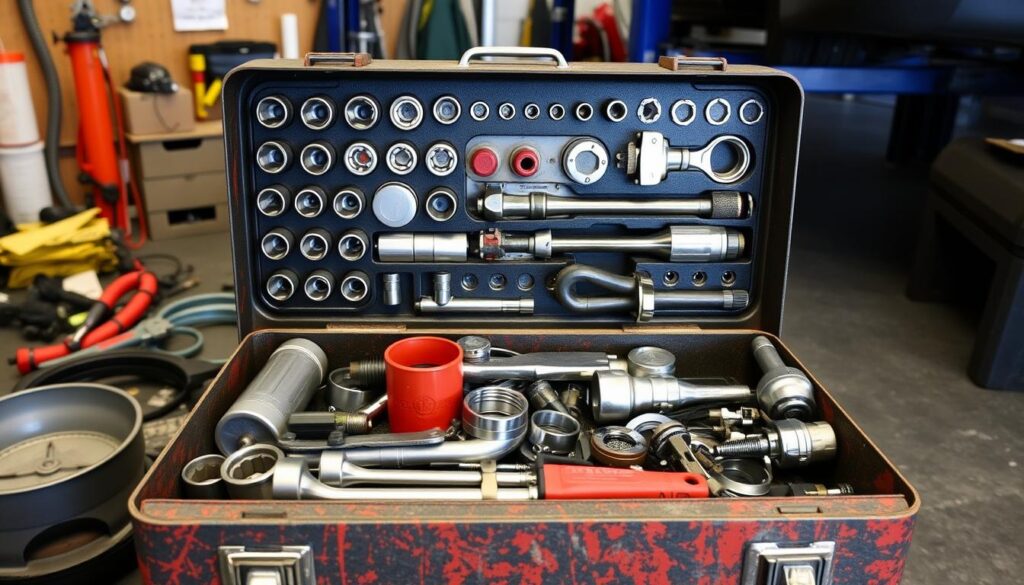
Investing in the right tools ensures a safe and successful installation. This way, you’ll enjoy a high-performance exhaust system.
| Tool/Equipment | Purpose |
|---|---|
| Wrenches | Removing stock exhaust system |
| Exhaust system lifts | Lifting and supporting exhaust system |
| Gloves | Protecting hands from injury |
Step-by-Step Exhaust Upgrade Process
Upgrading your exhaust system can seem complex, but it’s doable with the right tools. The exhaust upgrade process includes removing the old system and installing a new performance exhaust one.
To start, you’ll remove the stock exhaust system. This means disconnecting the exhaust manifold, catalytic converter, and muffler. Then, you’ll install the new system by connecting these parts. Lastly, test the system to make sure it works right.
Here are the main steps for the exhaust upgrade process:
- Remove the stock exhaust system
- Install the new performance exhaust system
- Connect the exhaust manifold, catalytic converter, and muffler
- Test the exhaust system to ensure it’s working properly
By following these steps, you can have a successful exhaust upgrade process. You’ll enjoy the perks of a new performance exhaust system.
Professional Installation vs. DIY Considerations
Upgrading your exhaust system can be done two ways: by a professional or DIY. Each method has its own advantages and disadvantages. A professional can ensure a top-notch job, but it costs more. On the other hand, doing it yourself can save money but takes more time and effort.
Cost is a big factor to think about. You need to consider the cost of tools, equipment, and any possible mistakes. Also, DIY work takes a lot of time. Make sure you have enough time and know-how to do it right.
Cost Comparison
- Professional installation: higher upfront cost, but potentially lower long-term costs due to reduced risk of mistakes
- DIY exhaust upgrade: lower upfront cost, but potentially higher long-term costs due to increased risk of mistakes
Time Investment
DIY installation takes a lot of time. Think if you have enough time and skills to do it well. A professional can save you time and effort, as they are experts.
Warranty Implications
Warranty is also important to consider. Some manufacturers might not honor the warranty if a non-professional installs the exhaust. Always check the warranty policy before choosing between professional or DIY.
Measuring Performance Gains
To see if an exhaust upgrade works, we need to measure its performance gains. This means looking at how much horsepower and torque it boosts. Dyno testing is a great way to get exact numbers on these improvements.
When thinking about an exhaust upgrade, consider the system type and any other car changes. This helps figure out how the upgrade will change the car’s performance. For example, a high-performance exhaust can really boost a car’s power, leading to big performance gains.
Dyno Testing
Dyno testing is a controlled way to measure performance gains. It runs the car on a dynamometer to measure horsepower and torque. This test can be done before and after the upgrade to see how much better the car performs.
Before and After Comparisons
It’s important to compare the car’s performance before and after the upgrade. This can be done through dyno testing and real-world driving. By looking at the data from these tests, we can see how much the upgrade improved the car’s performance.
When measuring performance gains, consider the exhaust system type, installation quality, and any other car changes. By carefully looking at these factors and using dyno testing, car owners can really understand how much their upgrade improved their car. This ensures they get the best value from their investment.

Knowing how to measure performance gains helps car lovers make smart choices about upgrades. This way, they can get the performance boost they want and enjoy better driving.
| Exhaust System Type | Performance Gains |
|---|---|
| Stock Exhaust | Baseline |
| High-Performance Exhaust | 10-20% increase in horsepower and torque |
| Cat-Back Exhaust | 5-15% increase in horsepower and torque |
Common Installation Mistakes to Avoid
When you upgrade your exhaust system, knowing common installation mistakes is key. One big mistake is not aligning the exhaust system right. This can lead to vibrations and noise. Always follow the manufacturer’s guide and take your time.
It’s vital to avoid installation mistakes for a successful exhaust upgrade. Here are some common errors to watch out for:
- Not tightening the exhaust system properly, which can cause leaks and performance issues
- Not using the correct tools and equipment, which can lead to mistakes and performance issues
- Not following the manufacturer’s instructions, which can result in a poorly installed exhaust system
To ensure a successful exhaust upgrade, take your time and follow the manufacturer’s instructions. By avoiding common installation mistakes, you can enjoy better performance, more power, and a smoother drive.
By knowing these common installation mistakes and taking precautions, you can have a successful exhaust upgrade. This upgrade will meet your needs and exceed your expectations.
| Mistake | Consequence | Prevention |
|---|---|---|
| Improper alignment | Vibrations and noise | Follow manufacturer’s instructions |
| Insufficient tightening | Leaks and performance issues | Use correct tools and equipment |
| Not following instructions | Poorly installed exhaust system | Take time and follow instructions |
Maintenance Tips for Your New Performance Exhaust
To keep your performance exhaust in top shape, follow some easy maintenance tips. Regular checks can spot problems early, keeping your exhaust system running well. By making maintenance a part of your routine, your exhaust will last longer and perform better.
A well-cared-for performance exhaust boosts your vehicle’s performance. Proper care stops corrosion and damage, keeping the system efficient. Think about the materials and where you drive to plan your maintenance.
Regular Inspection Schedule
Setting up a regular inspection schedule is key. Look for damage, check connections, and make sure it’s working right. This way, you can fix small issues before they get big.
Cleaning and Care
Cleaning and care are also important. Clean the system often to avoid debris buildup. Make sure everything is tight and in place. These steps help your exhaust last longer and perform better.
- Regularly inspect the system for damage or wear
- Ensure all connections are secure and working right
- Clean the system often to avoid debris buildup
- Follow the manufacturer’s maintenance schedule
By following these tips and keeping up with inspections, your performance exhaust will keep delivering great performance. Always follow the manufacturer’s maintenance advice and protect against corrosion and damage.
Conclusion: Maximizing Your Exhaust Upgrade Investment
Upgrading your vehicle’s exhaust system can really pay off. It boosts both performance and sound. By picking the right parts and following a detailed installation, you can get the most out of your performance exhaust. Keeping it well-maintained is essential for long-term benefits.
Choosing between a cat-back, header-back, or axle-back system depends on your vehicle’s needs. Understanding exhaust flow and material effects helps you make the best choice. This ensures your upgrade meets your performance goals.
It’s not just about the initial setup. Ongoing care is key to keeping your exhaust upgrade in top shape. Regular checks, cleanings, and quick fixes help your system perform well. With proper care, your exhaust upgrade can transform your driving experience.

